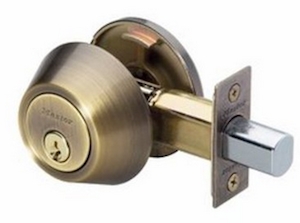Cleaning Brass Products
Cleaning and polishing tarnished brass objects can be a real chore. There are numerous brass polishing/cleaning products on the market. Some of the compounds (ammonia based products - caustic!) will react and actually dissolve the brass. Other compounds (acidic compounds such as citric acid or Maleic or Tartaric) will not dissolve the brass. These compounds aggressively attack the compounds on top of the brass. The mild acids soften the compounds allowing you to easily remove them. The partially oxidized brass remains. Often you can polish this with minimal effort.
Brass restoration can be an ordeal if it is severely tarnished. In these instances you may have to use a two step process. The first step is to apply a caustic tarnish remover. Often these are brushed on and left to work. Some products require you to use a mild acid neutralizer to stop the caustic from dissolving the brass. This is vital! If you leave the brushed on solution on the brass, it can continue to eat into the metal. Always follow instructions!
Light tarnish can often be removed with simple liquids that react quickly with the oxidized brass. You will have to simply read the instructions on the can or jar to see if you feel the product will work on your brass object. Remember, the degree of tarnish determines the product you will use! Many off the shelf products work just fine.
If you have brass specialty shops in your city/town, I urge you to call or stop in. These stores always sell excellent brass cleaning and polishing compounds. Remember, the store owners deal in brass everyday. They know which products to recommend and the best methods to use for each product. Don't re-invent the wheel. Ask for advice.
- Brasso - A liquid for lightly tarnished surfaces
- Colonial Metal Polish - a liquid that contains very fine abrasives for tougher jobs.
- Gillespie's - a three part kit. Works great for heavily tarnished objects. Follow directions!
- Nev'r Dull - require work and leaves very fine brushed look due to the fine abrasives.
- Noxon - light tarnish disappears with a soft cloth.
- Parks - a two step process for heavy tarnish
- Tarn-X - another liquid that attacks light tarnish
- Red Bear - available at many fine brass shops. Works well and washes off with water.
- Wenol - in a tube like toothpaste. It contains no abrasives and works really well on light tarnish.
Remember: Wear cotton or rubber gloves in the final stages of cleaning and polishing. The oils from your hands will leave fingerprints that will show up months later! Always wash the brass with soap and water after cleaning to remove all polishing and cleaning compounds!
Column B172
